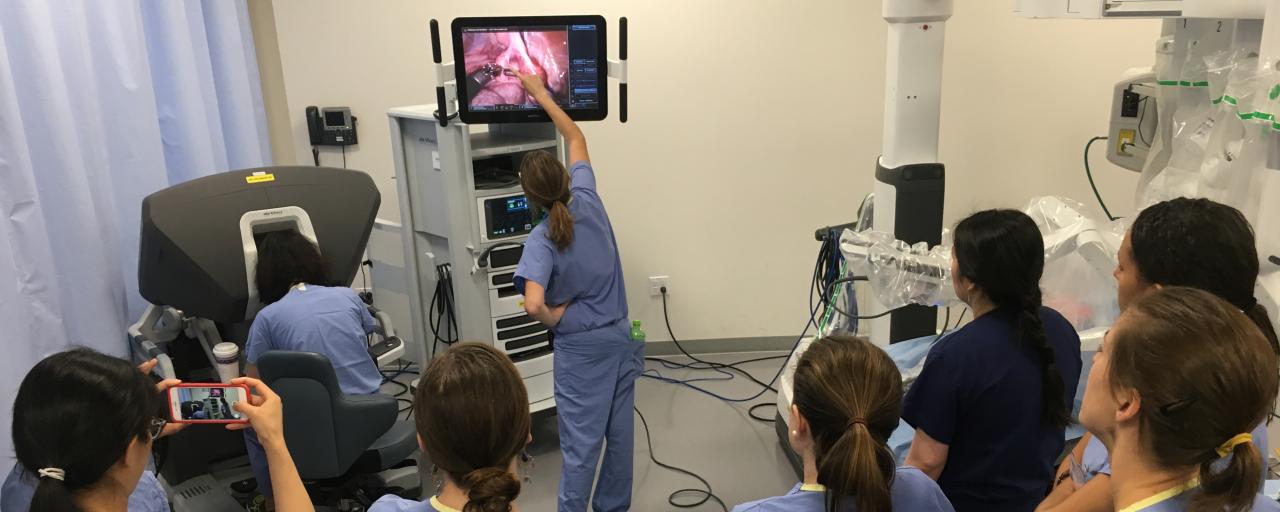Teaching To Technology: Will Robots in the OR Shift the Surgical Instruction Model?

UCSF general surgery research fellow Courtney A. Green, M.D. was recently interviewed by Daniel Seeger of Surgical Products Magazine about changes in the surgical instruction model heralded by the advent of robotic surgery in the operating room.
It’s well understood that robotic-assisted surgical systems are transforming the work that happens in the operating room. But does the increasing prominence of the devices in the healthcare field also require a transformation in how surgical instruction takes place?
Courtney Green, MD, a research fellow in the general surgery program at the University of California, San Francisco, has been trying to answer that very question. She presented the results of her research at the Society of Laparoendoscopic Surgeons Minimally Invasive Surgery Week conference in the fall.
“With robotics, I started getting interested in it because of the unique teaching component of it,” Green says. “Because it’s so separate, because the surgeon’s at a console separate from the patient — and separate from the resident sometimes — there has to be a lot more active teaching or active engagement, which surgeons aren’t necessarily ever taught how to do. The whole surgical educational model has always been an apprenticeship model: you see one, do one, teach one.”
One key to properly initiating a resident into working with a surgical robot is being mindful about how the process is distinctly different than other surgeries. Primarily, the dynamic in the OR is significantly altered by basic proximity factors.
“The process of performing a surgery may not be all that different with robotics; but the process of observing an expert and learning to recreate that performance — well, that has changed dramatically,” Green says. “One must observe the surgeon’s movements on the console and simultaneously process the consequential actions in the operative field located some distance away.”
Although there are some who view developing facility with robotic systems as basically similar to the learning curve experienced with previous advances such as laparoscopy, Green’s research suggests otherwise.
“Unlike in laparoscopy, where you’re still assisting a surgeon and still playing a role in the surgical field, robotics creates so much autonomy for an individual surgeon,” Green notes. “That’s great where resources are limited, but it results in a challenge in a training environment because the resident is no longer depended on to be that surgical assistant.”
Dr. Green developed the robotics curriculum for the UCSF Department of Surgery. Her latest research, “Investigation into the Perceptual Expertise of a Robotic Surgeon: How do we learn to feel what we see?“ is funded by a CSERT grant.
